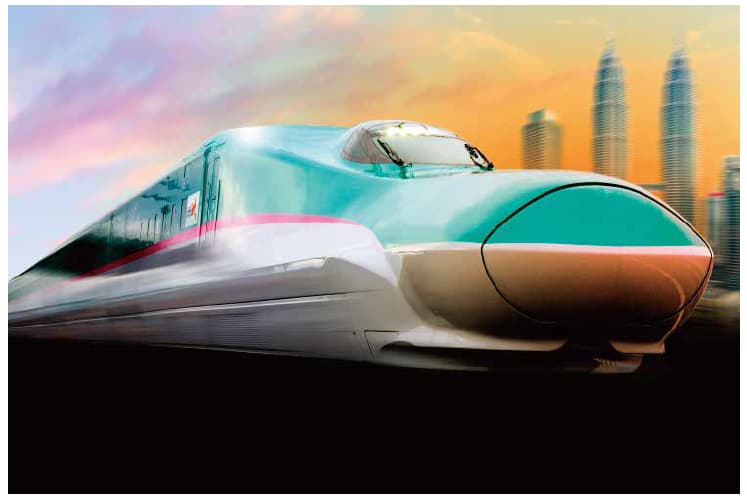
Over half a century ago, Japan debut the world's first high-speed rail network.
The Shinkansen, which literally means "new trunk line", is Japan's network of high-speed trains that connects Tokyo with other major cities in the country. It has transported more than 10 billion passengers since its maiden voyage in October 1964.
The world-renowned bullet train system is one of Japan's most prominent and highly-regarded technological advancements. It became the main artery of Japan's economy, transforming the island nation into one that's more urban, more mobile and more prosperous.
Today, Japan is keen to contribute to the development of high-speed rail lines worldwide by sharing information and knowledge with countries and regions that are considering the adoption of this advanced transportation system.
With operating speeds of up to 320 km/h, Shinkansen trains are among the fastest in the world and remain the gold standard in train travel with the following achievements:
Zero fatalities
Safety is paramount when it comes to transportation.
In its 53 years of operations, the Shinkansen has maintained an impeccable safety record with zero passenger fatalities and injuries - a track record that's unparalleled anywhere in the world. This achievement is all the more impressive when one considers that the Tokaido Shinkansen Line alone carries a staggering 445,000 passengers or more on a typical weekday.
This record of absolute safety is attributed to an operating principle known as the "Crash Avoidance" principle, which dictates a design eliminating any possibility of a crash occurring.
The "Crash Avoidance" principle comprises two systems:
- Dedicated tracks used exclusively for high-speed rail, unlike in other countries where tracks are shared with other passenger and freight trains. These dedicated tracks are also free of any level crossings, hence eliminating the risk of collisions with other trains and vehicles.
- An automatic train control (ATC) system which regulates the speed of the train in response to track conditions ahead, and the distance to the next train ahead. This is what enables the trains to run at their maximum operating speeds, which can go up to 320 km/h.
Beyond the hardware, the Shinkansen system also operates according to the "Total System Approach", in which the entire system, including its tangible and intangible components, is understood as a uniform whole.
The "Crash Avoidance" and "Total System Approach" operating principles reinforced the Shinkansen's ability to achieve absolute safety while operating with high frequency and large capacities.
High frequency
Besides safety, the Shinkansen is also well-known for reliability.
During the network's early days, trains ran once every 30 minutes. Today, they run one every four minutes, or about 15 trains every hour.
Average delays of less than a minute
The Shinkansen is also famous for its punctuality.
The trains are always on time, with an average delay of less than 60 seconds. This includes delays due to heavy rain, typhoons, earthquakes and other natural disasters. If a train arrives more than one minute late to its destination, the driver will have to provide a formal explanation.
Environmentally friendly
The Shinkansen trains' lightweight designs means it consumes much less energy, resulting in less maintenance for the tracks.
These enviable track records in safety, reliability, efficiency and environmental friendliness put the Shinkansen as the world's leading high-speed rail network. It's a people mover like no other, ferrying millions of passengers between cities in a quick, convenient and punctual transport system.
Just as it transformed Japan's economy, the Shinkansen has the ability to do the same for another country or region.